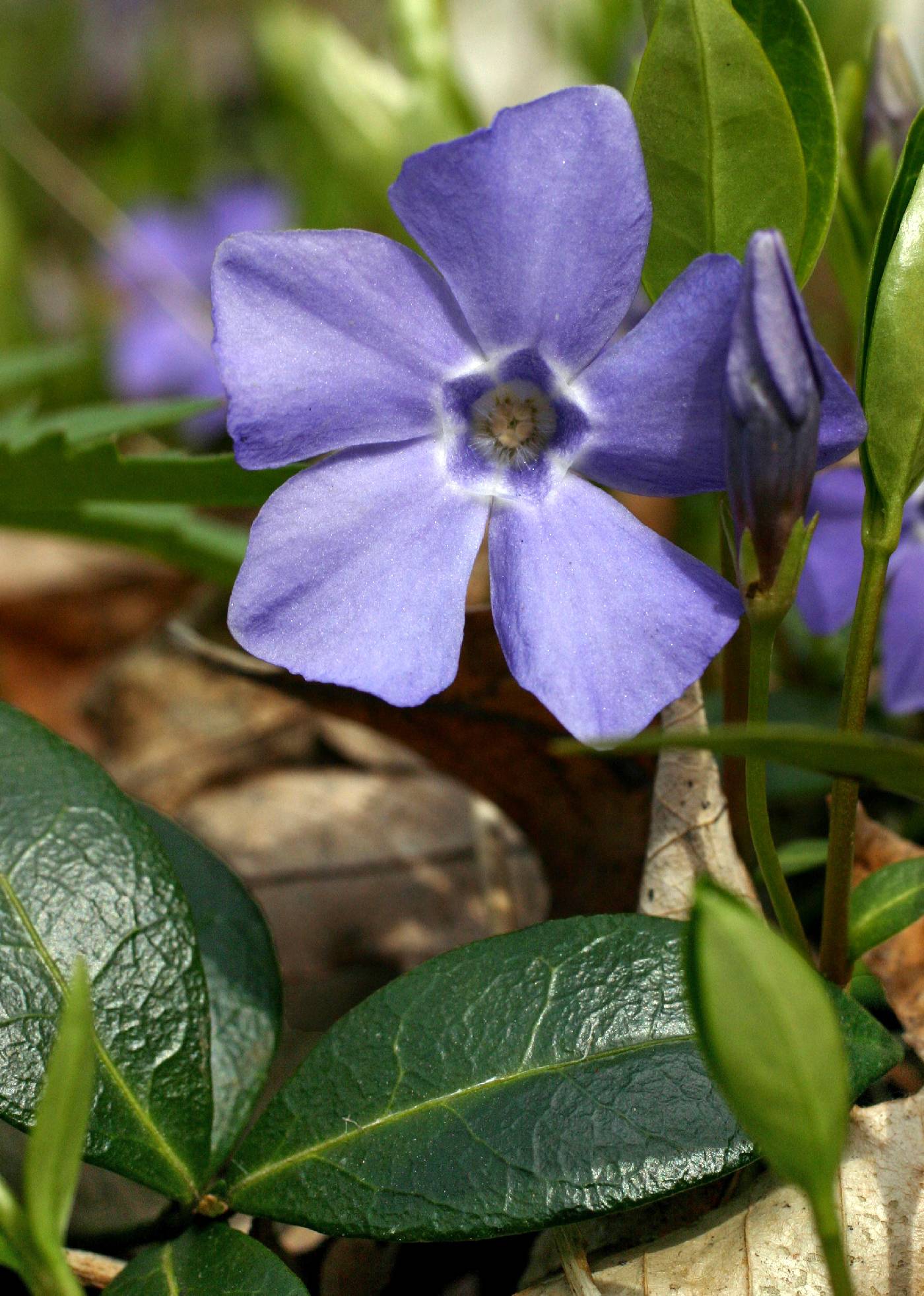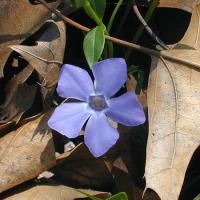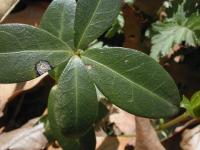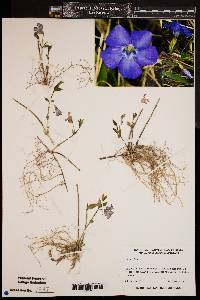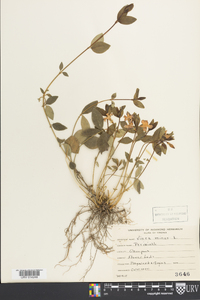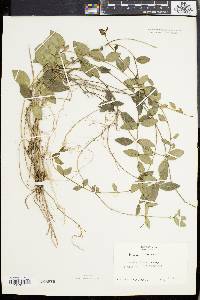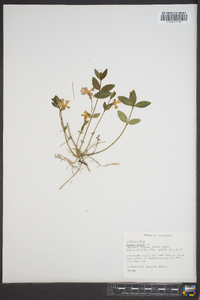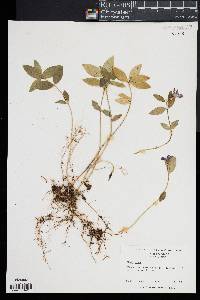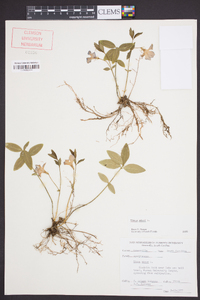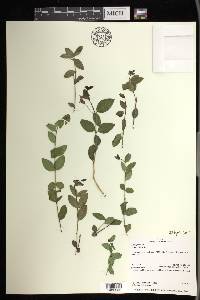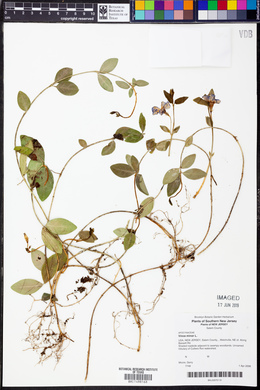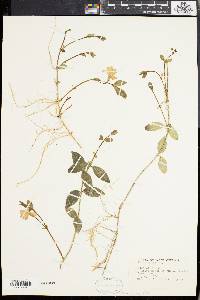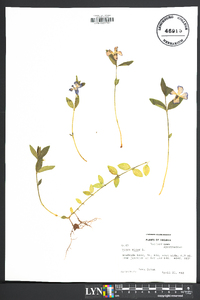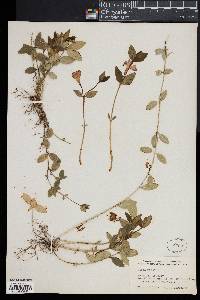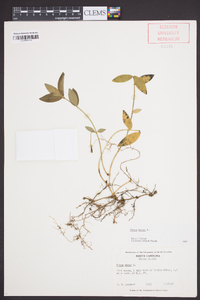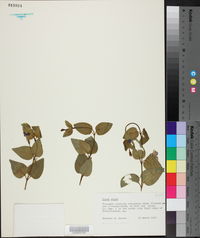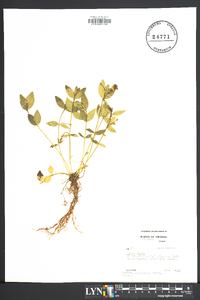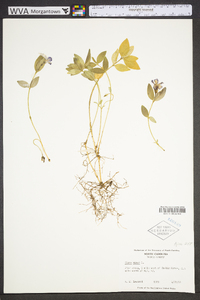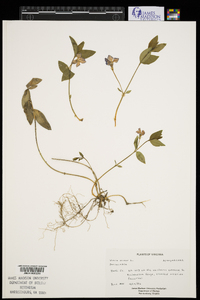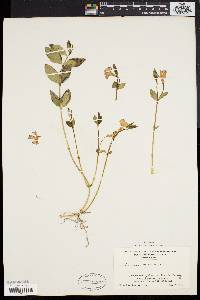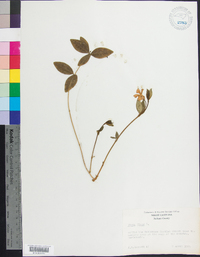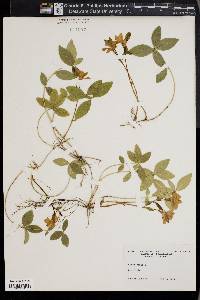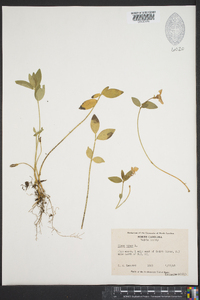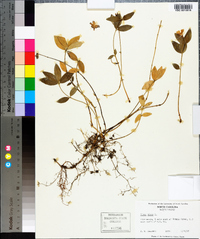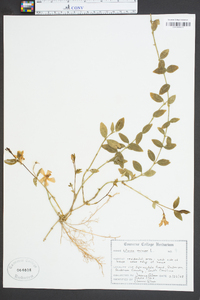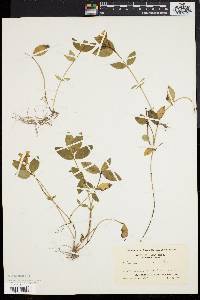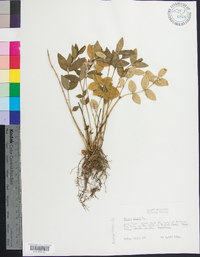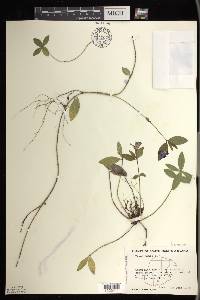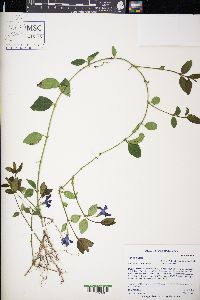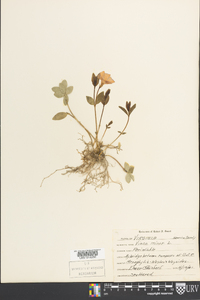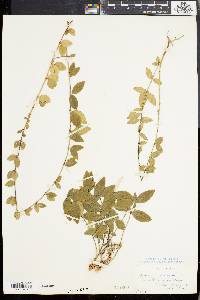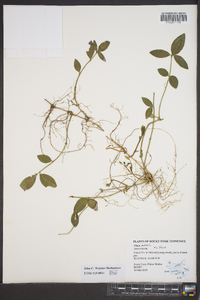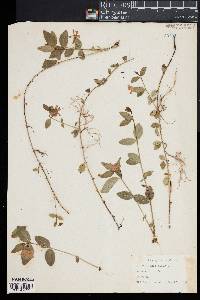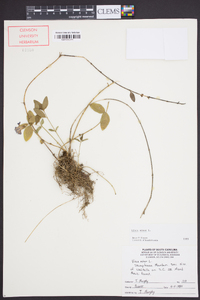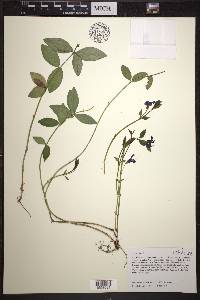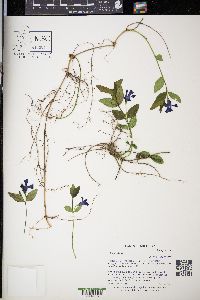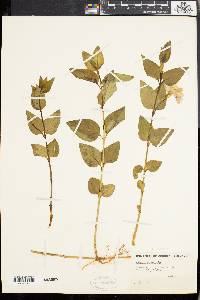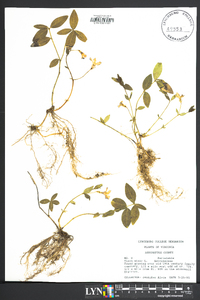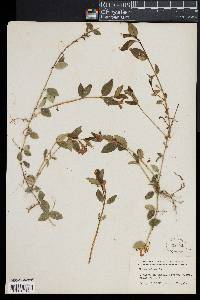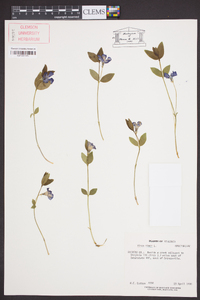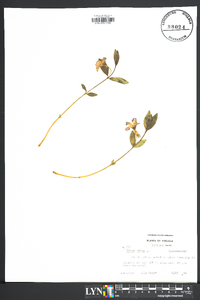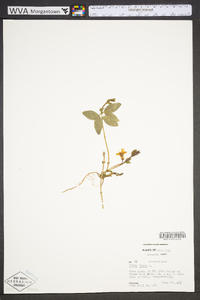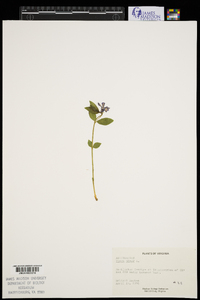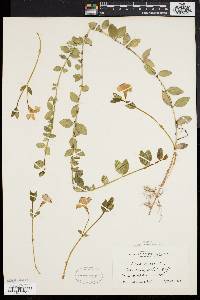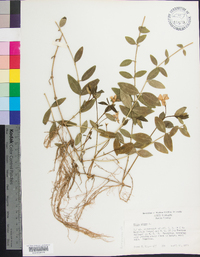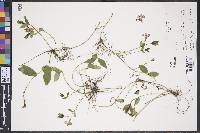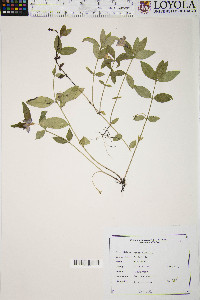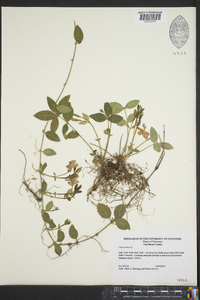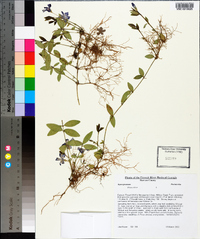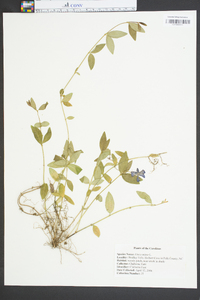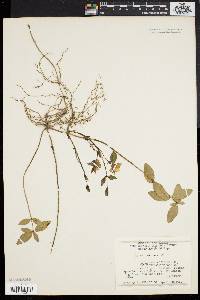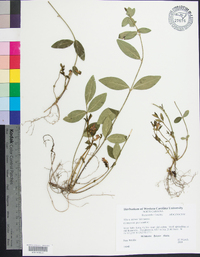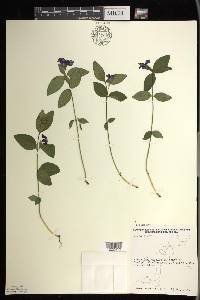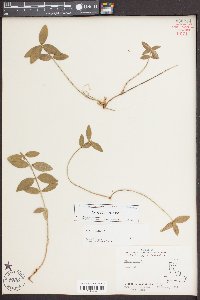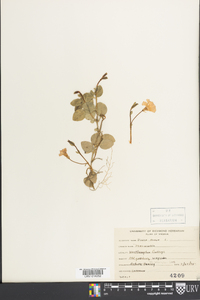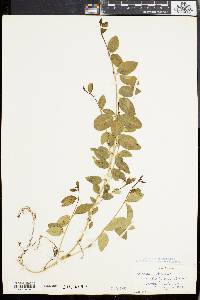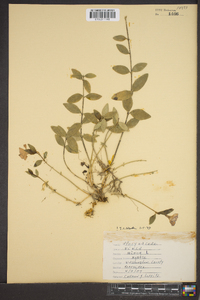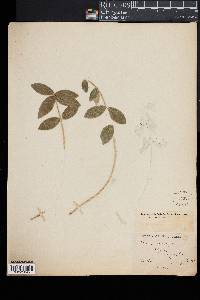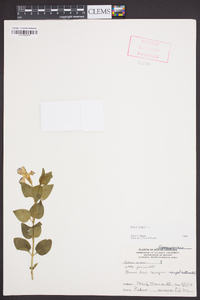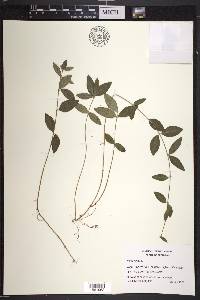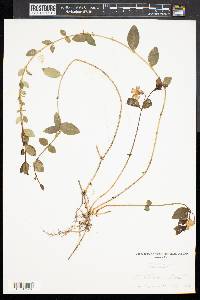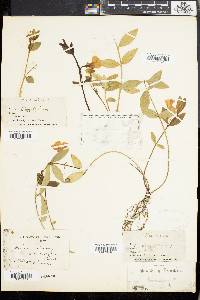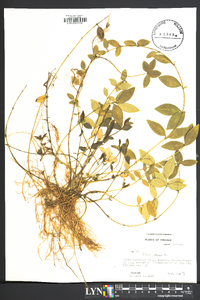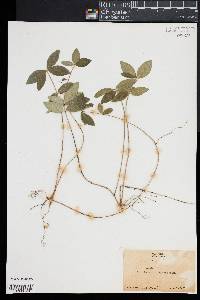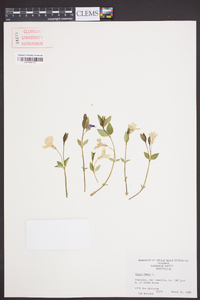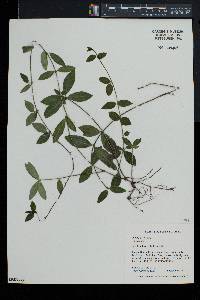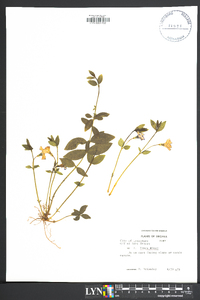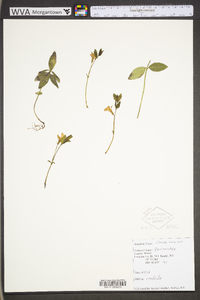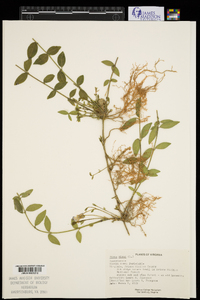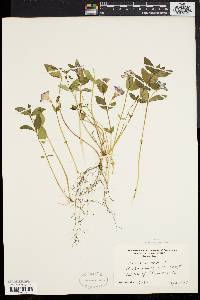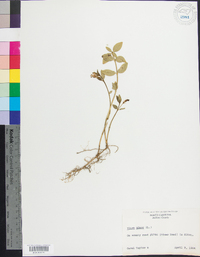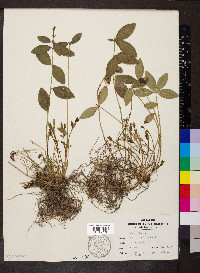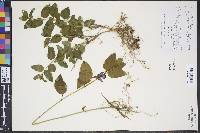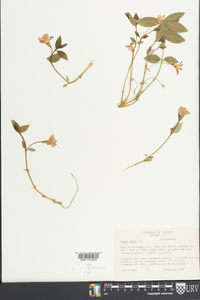Vinca minor
|
|
|
|
Family: Apocynaceae
Lesser Periwinkle
|
Perennial herb or subshrub 20 cm to 1 m tall Leaves: opposite, stalked, evergreen, glossy, leathery, 1.5 - 5 cm long, 0.5 - 2.5 cm wide, mostly lance-shaped to elliptic, widest near middle, with rounded or tapered base, non-toothed edges, and hairless surfaces. Flowers: on up to 20 cm long branches, but singly on long stalks (often longer than the subtending leaves) in the axils of one leaf per pair of leaves. The usually blue flowers are 2 - 3 cm in diameter, radially symmetric, and funnel-shaped with a gradually widened, spreading limb. Sepals: five, but fused at very base, then separating into hairless, 3 - 5 mm long, narrowly egg-shaped to narrowly triangular lobes with long-tapering pointed tips. Petals: five, but fused into a 0.8 - 1.2 cm long tube for half their length, then separating into spreading lobes. At the mouth of the petal tube, there is a zone of hairs and a low ridge that connect the lobe bases. Stamens: five, attached halfway up the petal tube (but below the ridge and hairs in the throat) with short filaments bent abruptly at the base, and separate anthers with connecting tissue which expands above into a flap-like appendage. Pistil: with two, superior ovaries having two disc-shaped nectaries alternating their bases; a single, slender style; and one stigma. Fruit: of two (per flower), dry, single-chambered, few-seeded, 2 - 2.5 cm long, linear, short-cylindric (with one narrowed end) capsule-like pods (follicles) which open lengthwise by a single seam. Stems: somewhat woody (remaining over winter), creeping, trailing, or scrambling, and forming mats, with the flowering branches more or less erect and up to 20 cm long. Seeds: four to eight per follicle, rough, but hairless. Similar species: Vinca minor is most similar to V. major, but that species has leaves that are obviously widest below the middle with fine bristly hairs along the edges. Flowering: April to June Habitat and ecology: Commonly escaping from cultivation and spreading to shaded areas, especially those that may have some disturbance history. Occurence in the Chicago region: non-native Notes: This European species is often planted as a ground cover because it prefers shady habitats. Unfortunately it can quickly spread to natural areas where it chokes out native plants. It has been cultivated for many centuries in Europe. There are several different possible flower colors including white, pink, purple, violet, and the more natural blue. Etymology: Vinca means "to bind", in reference to the trailing, viny aspect of the genus. Minor means small, referring to the smaller stature of the plant, expecially the flowers, in relation to the other species. Author: The Field Museum Stems somewhat woody, trailing or scrambling, to 1 m, forming mats, the flowering branches ±erect; lvs glabrous, coriaceous, lance-elliptic, 3-5 cm, entire; cor-tube 8-
12 mm, the limb 2-3 cm wide; 2n=46. Native of s. Europe, often escaped from cult. into roadsides and open woods in our range. Apr., May. Gleason, Henry A. & Cronquist, Arthur J. 1991. Manual of vascular plants of northeastern United States and adjacent Canada. lxxv + 910 pp. ©The New York Botanical Garden. All rights reserved. Used by permission. From Flora of Indiana (1940) by Charles C. Deam A trailing, woody perennial which spreads rapidly in some localities. I have no evidence that it spreads by seed. The largest colony known to me is in Spring Mill State Park. Here it covers acres of native forest land and forms so dense a stand that it not only makes difficult the reproduction of the forest trees but in many places excludes almost all kinds of vegetation. For this reason it should not be permitted to escape to woodland. Most commonly used in cemeteries from which it often escapes. On account of this use it is commonly called graveyard myrtle or myrtle. Naturalized in all parts of Indiana. …… Indiana Coefficient of Conservatism: C = null, non-native Wetland Indicator Status: UPL Diagnostic Traits: trailing subshrubs; leaves opposite, evergreen, elliptic, eciliate; petioles 0-5 mm long; flowers solitary in leaf axils, salverform, blue, less than 3.2 cm wide. |

